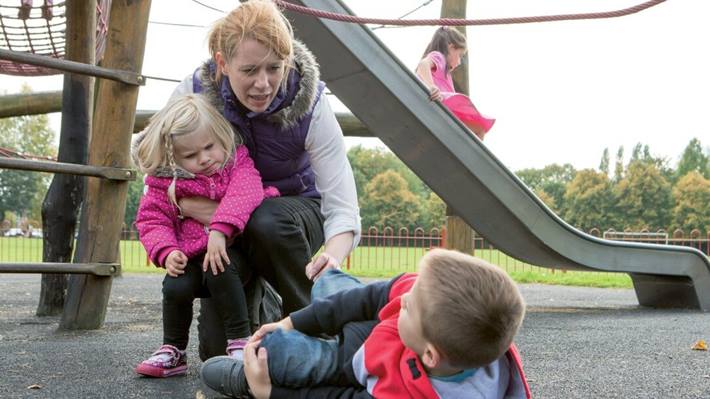Heatstroke first aid: symtpoms, treatment and emergency advice
Adult first aid for someone who may have heatstroke including signs, symptoms and what to do in an emergency.
What is heatstroke?
Heatstroke occurs when someone becomes so hot it causes a failure of the brain’s thermostat, leading to the body becoming dangerously overheated. It is an emergency and needs medical help urgently.
Signs and symptoms of heatstroke
If you think someone has heatstroke, they may show the following signs or symptoms:
- have hot, flushed, and dry skin
- have a headache,
- feel dizzy, or be confused and/or restless
- rapidly worsening condition leading to being unresponsive
- body temperature over 40°C
Learn heat-related first aid treatment for babies and children.
First aid treatment to help someone who has heat stroke
Step 1. Call 999
Step 2. Quickly move the person into a cool environment
Remove outer clothing and loosely wrap the person in cool damp clothes or a sheet.
Step 3. Continuously pour cool water over the sheet or clothes
If there is no sheet available, you can also fan them or sponge them with cool water.
Step 4. Keep cooling them while waiting for help to arrive
If their temperature returns to normal and they no longer feel hot to touch, you can stop cooling them. Replace the wet sheet with a dry one and help them to rest.
Frequently asked questions about heatstroke first aid
What causes heat stroke?
Heat stroke can happen when you're exposed to very high temperatures, especially if you're not used to them. Exercising in the heat, and wearing excess clothing that prevents sweat from evaporating easily. Drinking alcohol and becoming dehydrated by not drinking enough water will increase your chance of heatstroke.
Who's at risk from heat stroke?
Anyone is at risk from heatstroke, but young children and older people tend to be most at risk. People with certain health conditions are also at greater risk. These include certain chronic illnesses such as heart or lung disease, or diabetes.
“The first sign that a child is overheating is when they become grumpy or complain of a headache. If this happens, get them into a shaded place that is as cool as possible. Remove any clothing you can, give them water to drink and get them to rest." Sheffield Children's NHS Foundation
What is the difference between heat stroke and heat exhaustion?
Heat exhaustion is caused when your body fights to maintain its core temperature, 37.5C. When the surrounding environment is hotter than that, your body grows tired and heat exhaustion sets in.
Symptoms of heat exhaustion are:
- a headache
- dizziness and confusion
- feeling sick
- sweating
- cramps in the arms, legs, and stomach
- fast pulse
- high temperature
- feeling thirsty
Find out more about heat exhaustion with our first aid advice.
If heat exhaustion is not treated, it can then become heat stroke. And that's a lot more serious.
Sunstroke has the same symptoms as heat stroke but happens when your body overheats from too much sunlight. Heat stroke can happen when you're stuck inside a room without enough cool air.
More basic first aid learning for heat stroke
Heatstroke is a heat-related illness closely related to other first aid emergencies. Learn the symptoms and basic first aid treatment for heat exhaustion and dehydration so you can keep yourself and others safe during hot weather.
Have our First Aid app? Open it to try the quiz and test your knowledge. If you don't have it, download the app and start learning.
Or learn first aid treatment for heat exhaustion and heatstroke in babies and children.
Related first aid skills
Do you have a question about this page or want to give us feedback? Visit our Contact us page.



